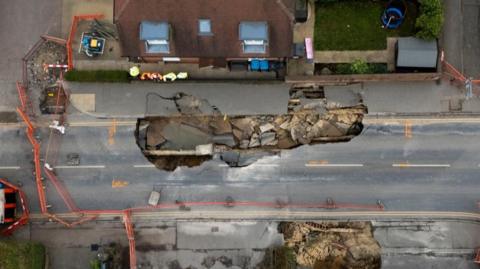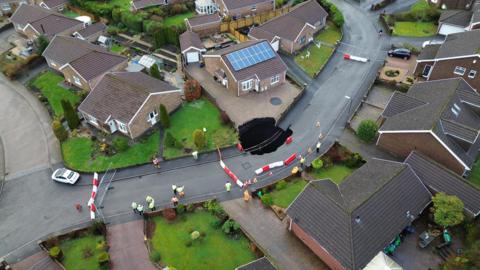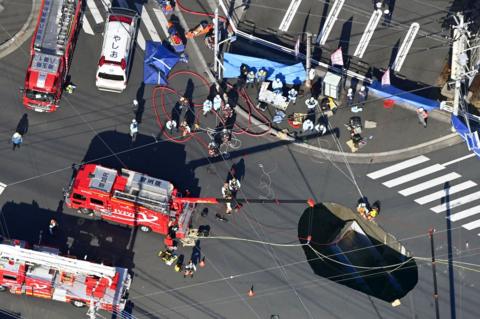Sinkholes can appear for many different reasons - it is often due to the geology but human factors can also be a cause.
One of the most common reasons for a sinkhole is when rocks like limestone or chalk break down. This happens because carbon dioxide from the air dissolves in rainwater to form carbonic acid - this then percolates through the rock and reacts with it, causing it to dissolve.
Sometimes this process can happen gradually, where the depression becomes larger over time.
In other instances, the limestone sits below another layer of rock, which means that as it gets dissolved there are no immediate signs at the surface.
The overlying rock, sometimes clay or sandstone, will then suddenly collapse into the depression beneath - called a 'collapse sinkhole'.
These are most common in South Wales where sandstone rocks lie above caves in the limestone.
But human activities can also accelerate the formation of sinkholes or cause the ground to collapse in a similar way.
Andrew Farrant, British Geological Survey regional geologist for south-east England, suspects that is what has happened in Godstone and it is not a true sinkhole.
He said that one theory is that a burst water main has caused a sudden influx of water into the sandstone bed "flushing" the rock out the way.
Pete Burgess, of the Wealden Cave and Mines Society, said a quarry marked "sand pit" can be seen on 19th century maps of land directly under the sinkhole.
He added that sand from the pit was dug out and used for building and gardening purposes.
Mr Farrant said that sand pit had been filled in but he added that there had been a significant amount of historic mining in the area and it cannot be ruled out that there were some unmapped pits and quarries that have been built on.


